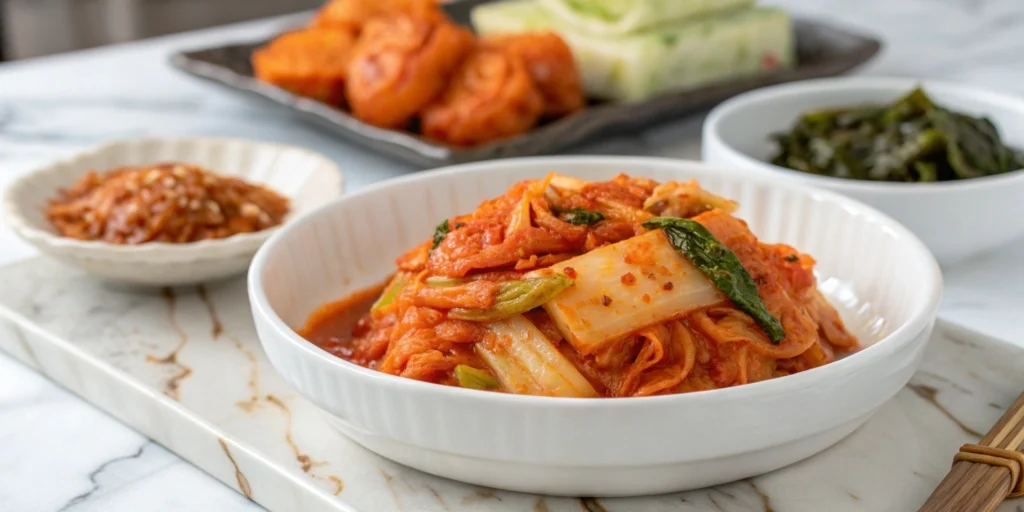
Table of Contents
Kimchi, or 김치 (pronounced “kim-chi”), quickly became a cornerstone of my cooking journey. Its bold flavors and vibrant tang reminded me of my grandmother’s kitchen, and the process of making it felt like reviving a piece of her legacy. With just five simple steps, this recipe will help you create your own batch of kimchi, connecting tradition with the ease of modern cooking.
What Is Kimchi, and Why Make It at Home?
Kimchi is Korea’s beloved fermented vegetable dish, traditionally made with Napa cabbage and daikon radish. It’s celebrated for its versatility and deep, layered flavors that balance spicy, tangy, and umami elements.
Why should you make it at home?
- Cost Savings: Homemade kimchi is more affordable than store-bought options.
- Personalization: Control the spice, saltiness, and added vegetables to match your tastes.
- Health Benefits: Rich in probiotics, it supports digestion and boosts immunity.
Imagine savoring a spoonful of kimchi made with your hands—fresh, flavorful, and uniquely yours.
Ingredients for Homemade Kimchi
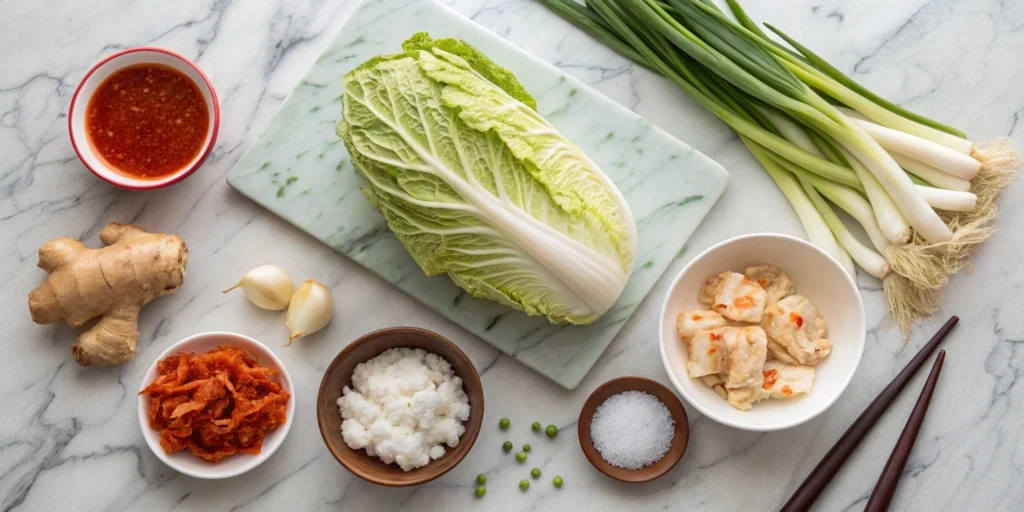
Before you begin, gather these ingredients:
- Napa cabbage: 2 pounds (provides sweetness and crunch).
- Kosher salt: 1/4 cup (draws out moisture, enabling fermentation).
- Garlic: 5 minced cloves (adds sharp depth).
- Ginger: 1 teaspoon grated (offers warmth and balance).
- Gochugaru (Korean red pepper flakes): 2–5 tablespoons (adjust for your spice preference).
- Fish sauce or shrimp paste: 2 tablespoons (adds savory umami; use soy sauce or miso for a vegan option).
- Scallions: 4 stalks, chopped into 1-inch pieces (for a fresh, oniony kick).
- Daikon radish or carrot: 1 medium, cut into matchsticks (provides texture and sweetness).
These ingredients blend traditional elements with room for modern adjustments, making the recipe approachable for all.
Step-by-Step Guide to Making Kimchi
Step 1: Brine the Cabbage
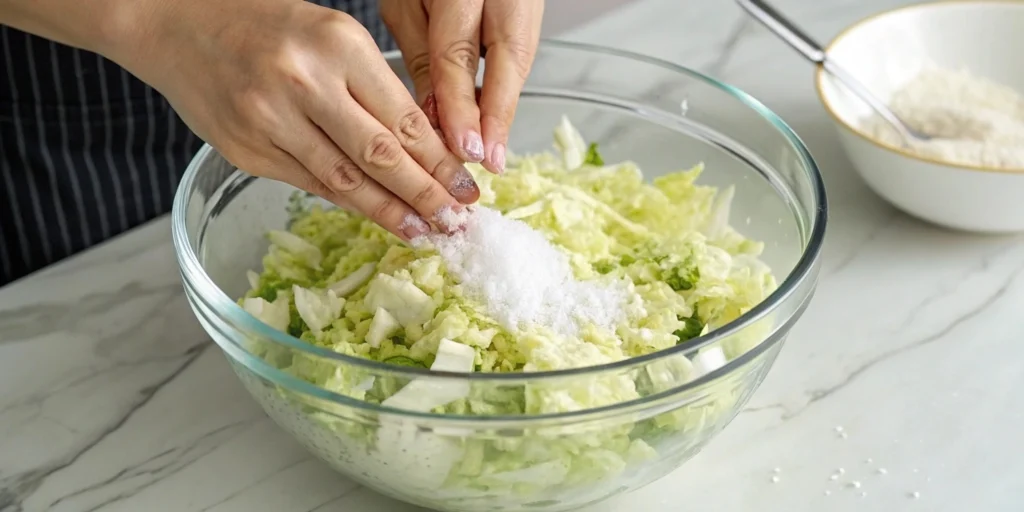
- Chop the Napa cabbage into bite-sized pieces.
- In a large bowl, sprinkle 1/4 cup kosher salt over the cabbage. Massage it thoroughly until the leaves soften slightly.
- Add water to submerge the cabbage and let it sit for 2 hours. Toss occasionally.
- Rinse the cabbage under cold water to remove excess salt, then drain well.
This step creates the ideal texture, keeping the cabbage crisp while making it ready to absorb flavors.
Step 2: Prepare the Kimchi Paste
- In a small bowl, mix 5 minced garlic cloves, 1 teaspoon grated ginger, and 2–5 tablespoons of gochugaru.
- Stir in 2 tablespoons of fish sauce or shrimp paste (or your vegan alternative).
- If the mixture feels too thick, you can thin it slightly with a small amount of water.
The paste is the heart of the dish, combining spices and umami for a bold flavor foundation.
Step 3: Mix the Vegetables and Paste
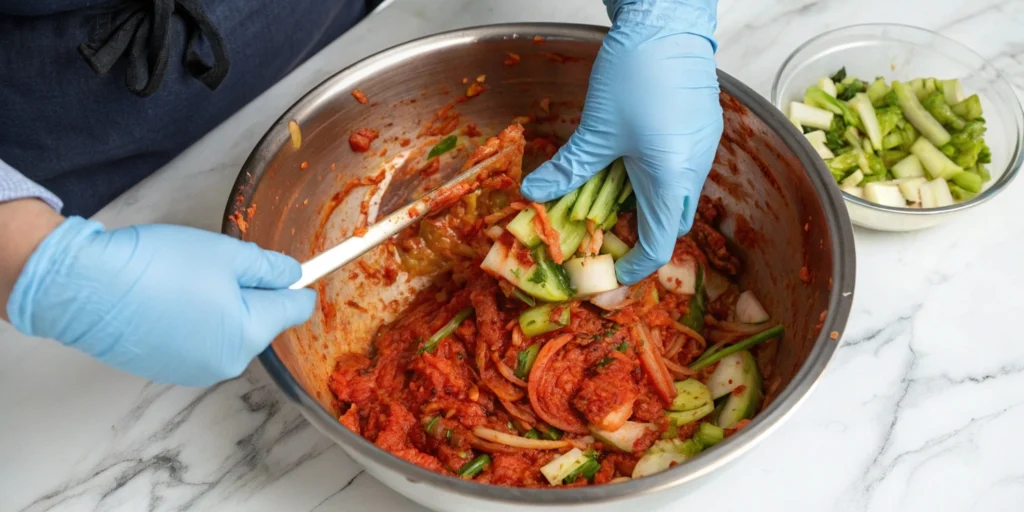
- Combine the drained cabbage, matchstick daikon radish or carrot, and scallions in a large mixing bowl.
- Pour the prepared kimchi paste over the vegetables.
- Using gloves, massage the paste into the vegetables until evenly coated.
This hands-on step connects you with the process, ensuring every bite bursts with flavor.
Step 4: Pack and Ferment
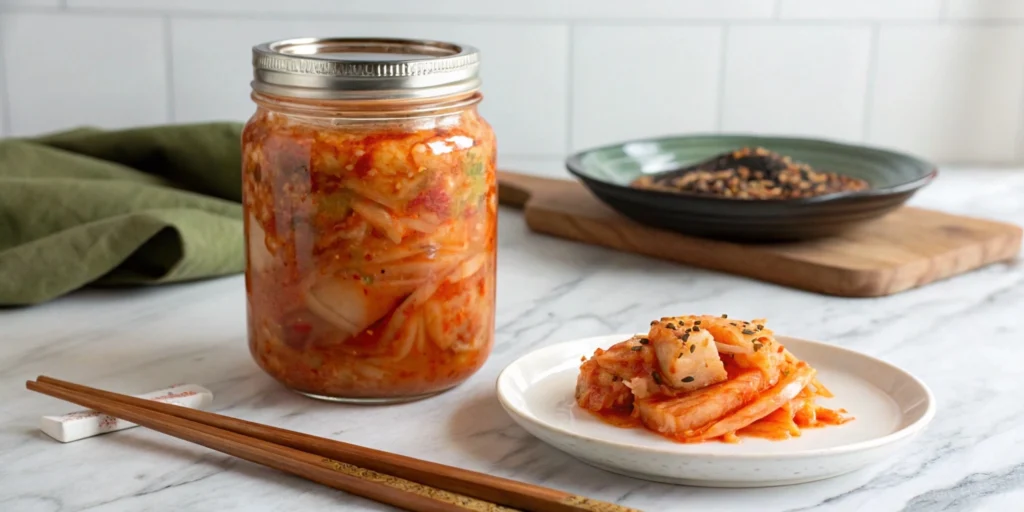
- Pack the coated vegetables tightly into a clean glass jar, pressing down to remove air pockets. Leave about an inch of space at the top for fermentation expansion.
- Cover the jar loosely to allow gases to escape during fermentation.
- Place the jar in a cool, dark spot for 1–2 days.
Step 5: Store and Enjoy
- After 1–2 days, taste the kimchi. If it’s tangy enough for your liking, seal the jar tightly and store it in the refrigerator.
- Enjoy immediately or let it continue fermenting for a deeper, more complex flavor.
Kimchi improves with time, making every bite more satisfying.
Health Benefits of Kimchi
Making kimchi isn’t just about flavor—it’s also a gift to your health:
- Rich in probiotics, it helps maintain gut health and promotes better digestion.
- Rich in Nutrients: High in vitamins A, B, and C.
- Anti-Inflammatory: Contains antioxidants that may reduce inflammation.
Including kimchi in your meals can enhance both your physical and emotional well-being.
FAQs About Easy Kimchi Recipe
How Long Does It Take to Ferment Kimchi?
Fermentation starts in 1–2 days at room temperature. For a more intense flavor, let it mature in the refrigerator for 1–2 weeks.
Can I Make Kimchi Without Fish Sauce?
Yes, you can substitute fish sauce with soy sauce, miso, or kelp powder for a vegan-friendly option.
What Can I Eat Kimchi With?
Kimchi is versatile! Pair it with rice, use it as a topping for burgers, or stir it into soups for a tangy kick. You can even add it to Hae Mool Jeon Goal!
Conclusion
Kimchi-making is more than just a recipe; it’s a connection to heritage and a journey into flavor. For me, it brought back memories of my grandmother’s kitchen and opened the door to a world of culinary creativity.
Try making your own kimchi today—it’s simpler than you think, and the rewards are endless. Whether you’re rediscovering your roots or just looking for a delicious way to spice up your meals, this easy recipe will leave you inspired.
Ready to dive into the world of kimchi? Share your experience and let us know how your batch turns out!
